The way the manway is closed and opened determines many of its technical and functional characteristics. This is because very often the type of closing directly affects the pressure resistance of a manway, as well as the comfort of its current use. It is worth taking a closer look at the types of stainless steel manway closings, as well as learning about their advantages, disadvantages and procedures for use.

Among tank manways, three types of closings predominate: handwheel, clamp and sliding gate. Each of them has its own distinctive features, which are worth knowing and keeping in mind when choosing the right manway model.
Closing manways with handwheels is the predominant practice among non-pressure and pressure tank covers. It is safe to say that 90% of manways are equipped with this type of closing – so they can be found in manways of all available shapes (round, oval and rectangular).
The handwheel solution for closing the manway is based on pressing the cover against the manway frame with one or more handwheels, the stems of which are connected to a permanently installed socket on the manway frame. Between the frame (flange) and the manway cover is a flexible gasket, which ensures the tightness of the entire structure.
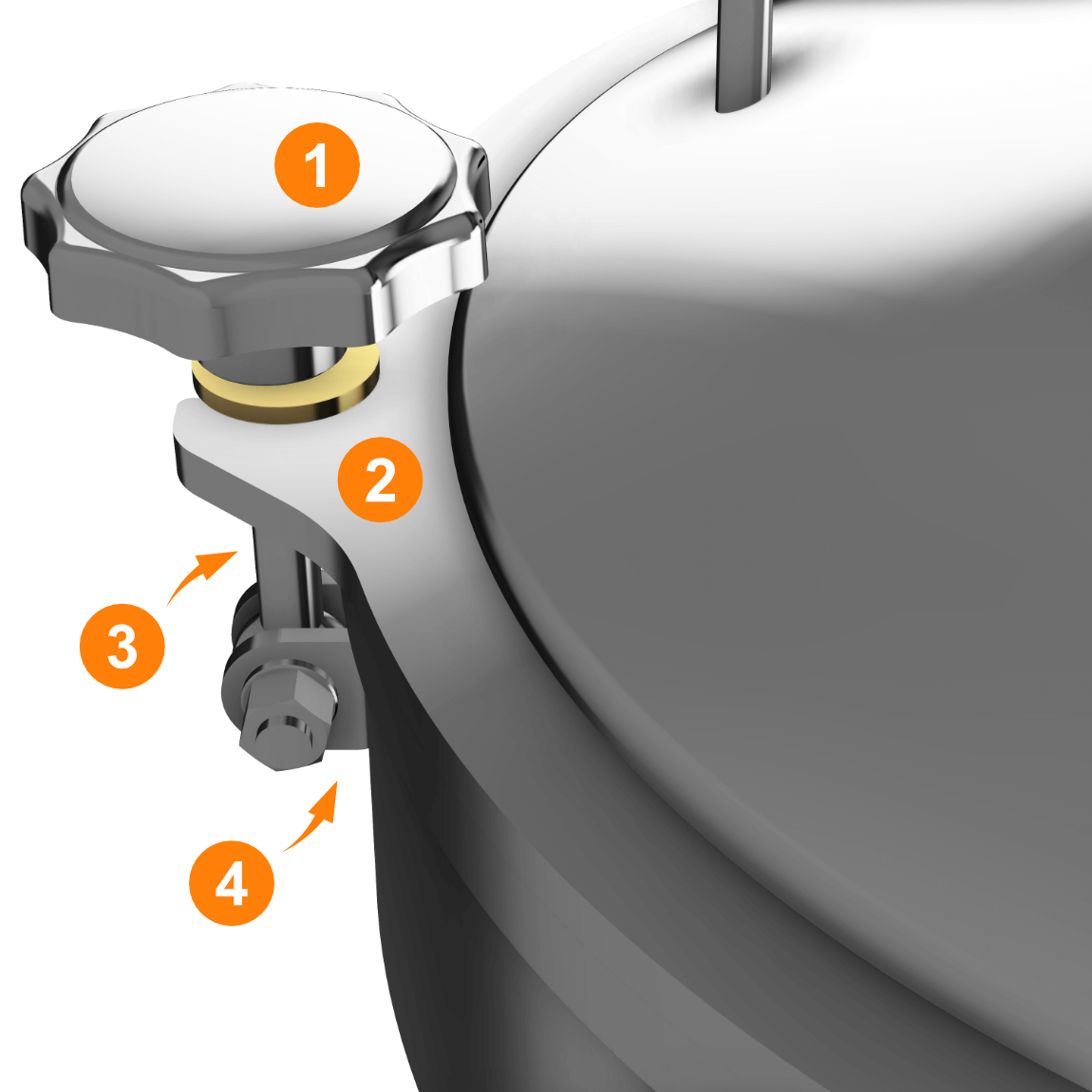
Components of the handwheel closing of the round tank manway:
Handwheel closing for round and rectangular manways is based on exactly the same principle. The situation is somewhat different for oval manways, which for the most part have a cover that opens inward into the tank (rather than outward – as is the case with most round and rectangular manways).
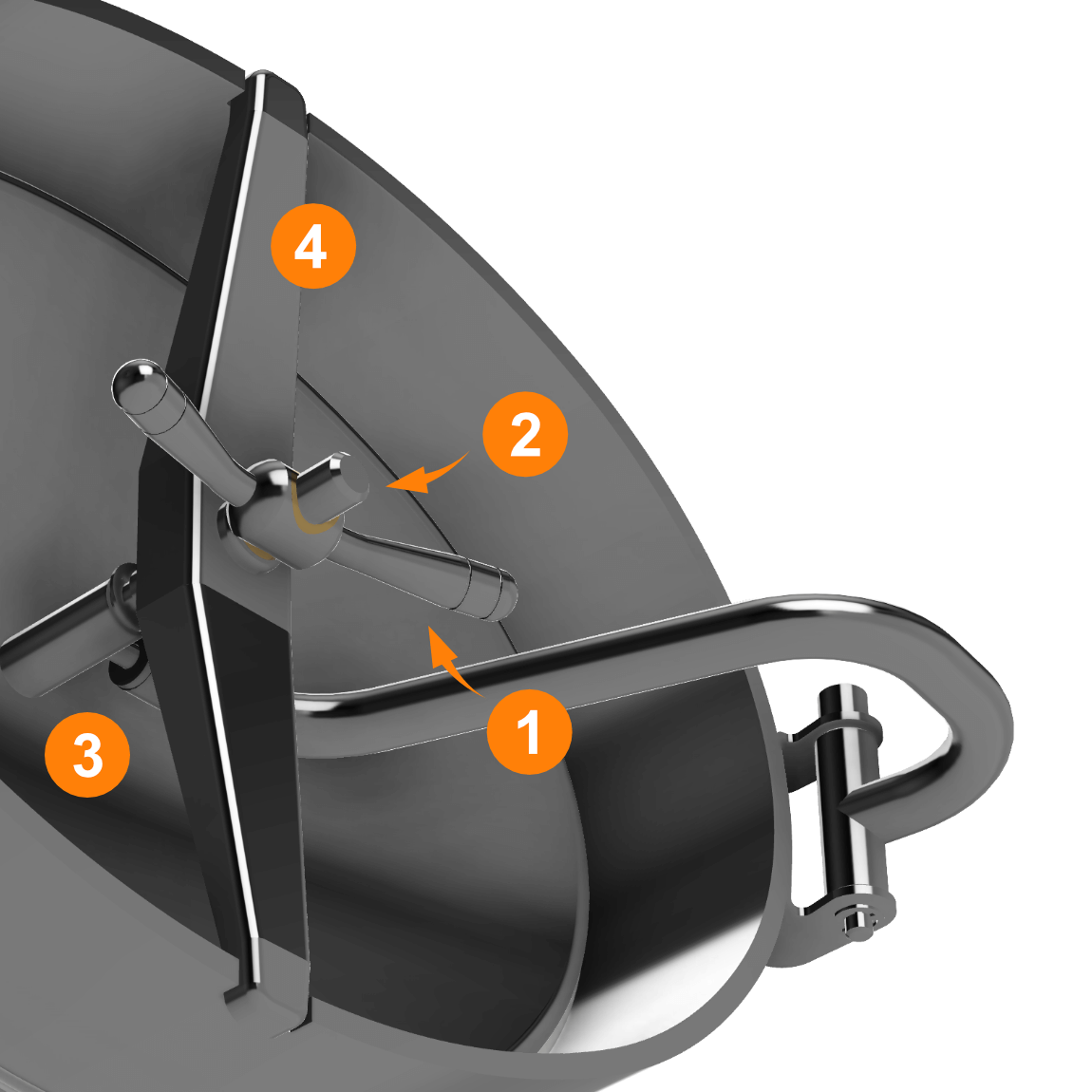
Elements of the handwheel closing of the oval tank manway:
Unlike the handwheel closing of a round or rectangular manway, the closing with the handwheel of an inward-opening oval manway has a characteristic element in the form of a crossbeam. This element is responsible for holding the cover from inside the tank and for the stability of its position when the opening is properly closed.
Handwheels for manways are usually found with threads: M10, M14 and M16. Some models also provide for the use of handwheels with M8 and M22 threads.
Among the handwheels for tank manways, two materials prevail: plastic and stainless steel. The use of one or the other material depends primarily on the characteristics of the plant and the use of the manway.
Plastic handwheels are used primarily in installations where high temperatures and aggressive media (liquids or gases) are not present. It is recommended that plastic handwheels be used in installations where the operating temperature does not exceed 70°C, and there are no extremely strict hygiene guidelines. Plastic handwheels usually have a brass internally threaded insert.
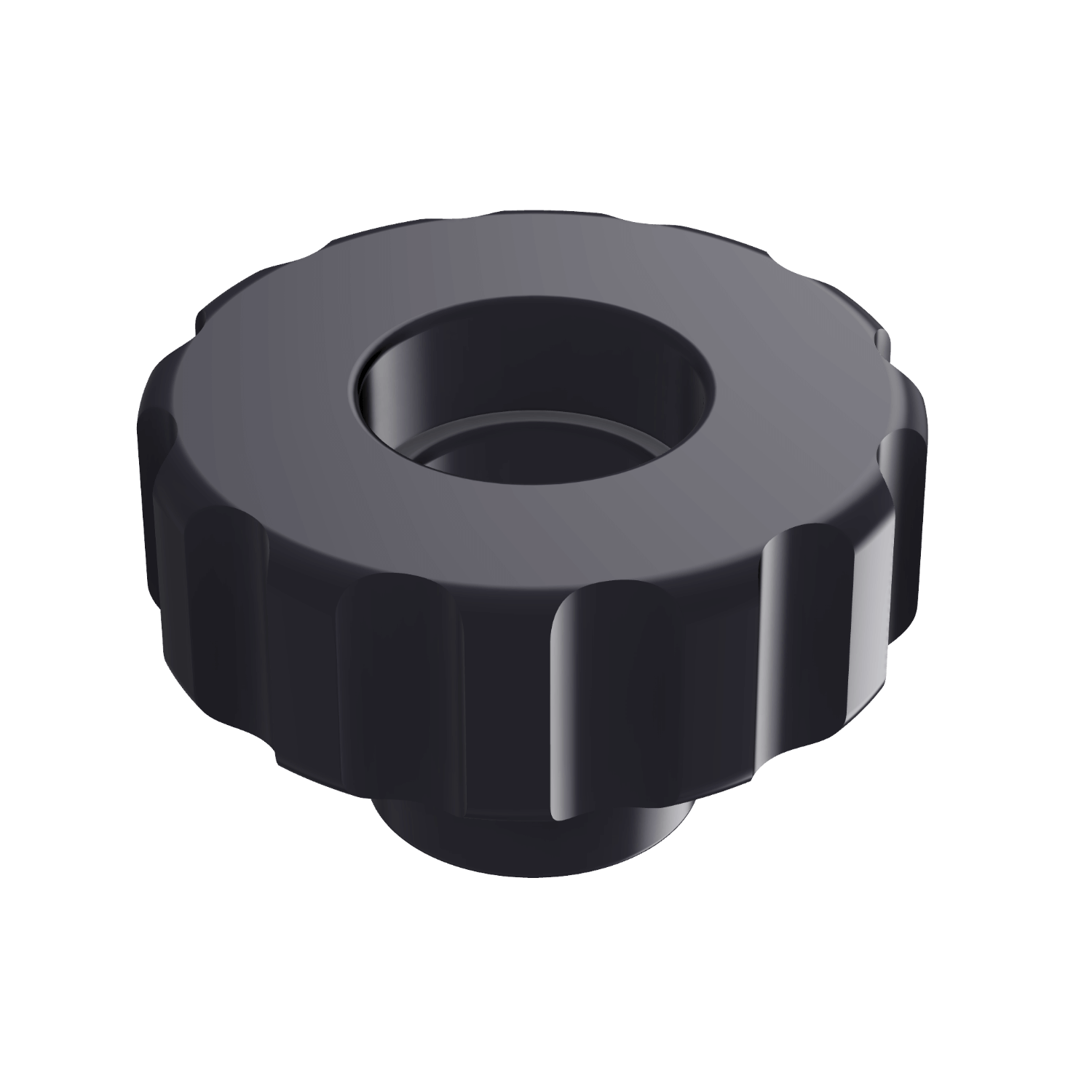
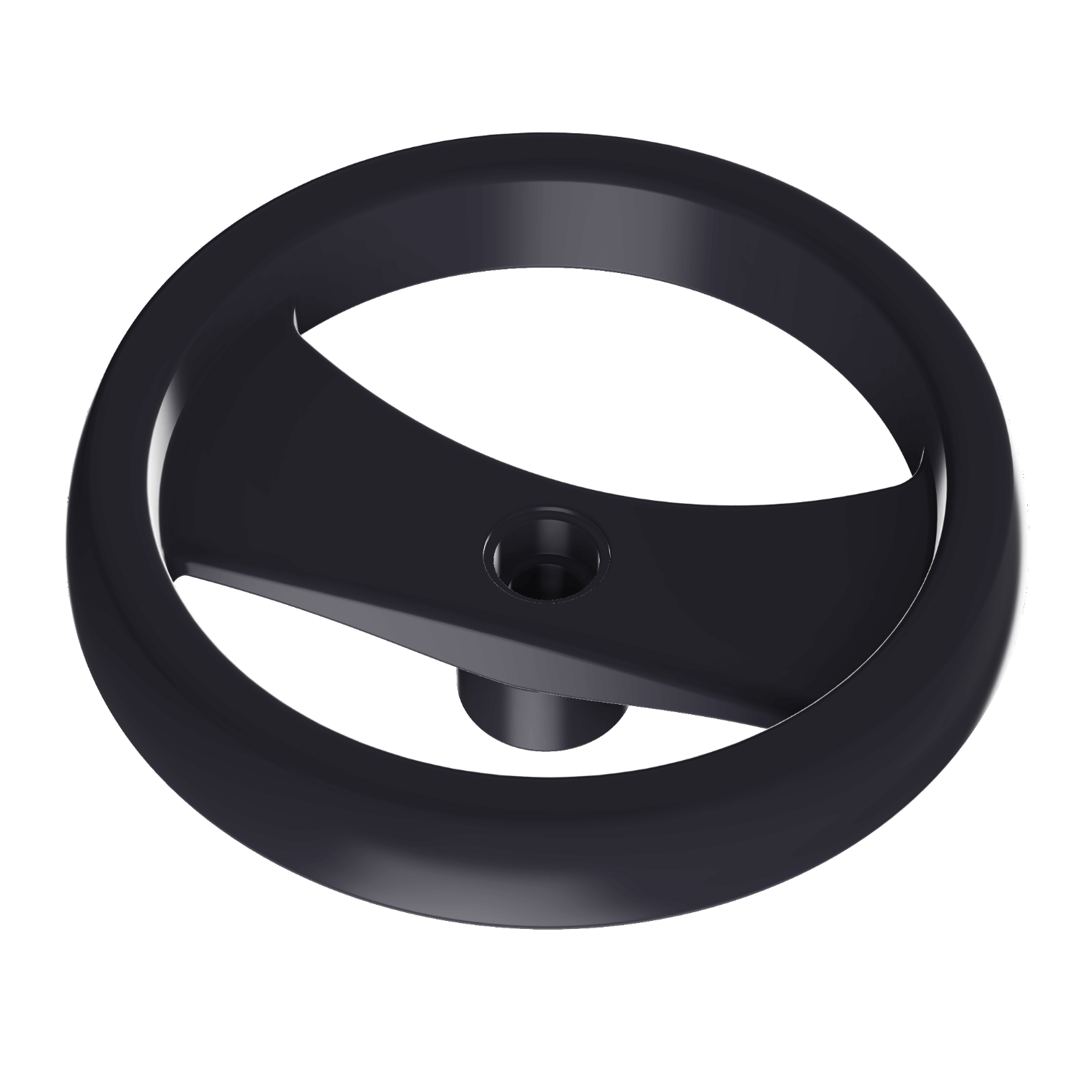
Stainless steel (INOX) handwheels usually feature a smooth surface and, above all, better chemical and temperature resistance. For this reason, they are used in more demanding installations. INOX handwheels typically come in two options:
The use of round or butterfly handwheels in a manway is determined both by the design of the manway itself and the expected characteristics of use. For example: oval manways are primarily equipped with butterfly stainless steel handwheels to ensure that the pressure is strong enough, as well as to make it easier for the operator to open as well as close the cover when the cover is on the side of the tank.
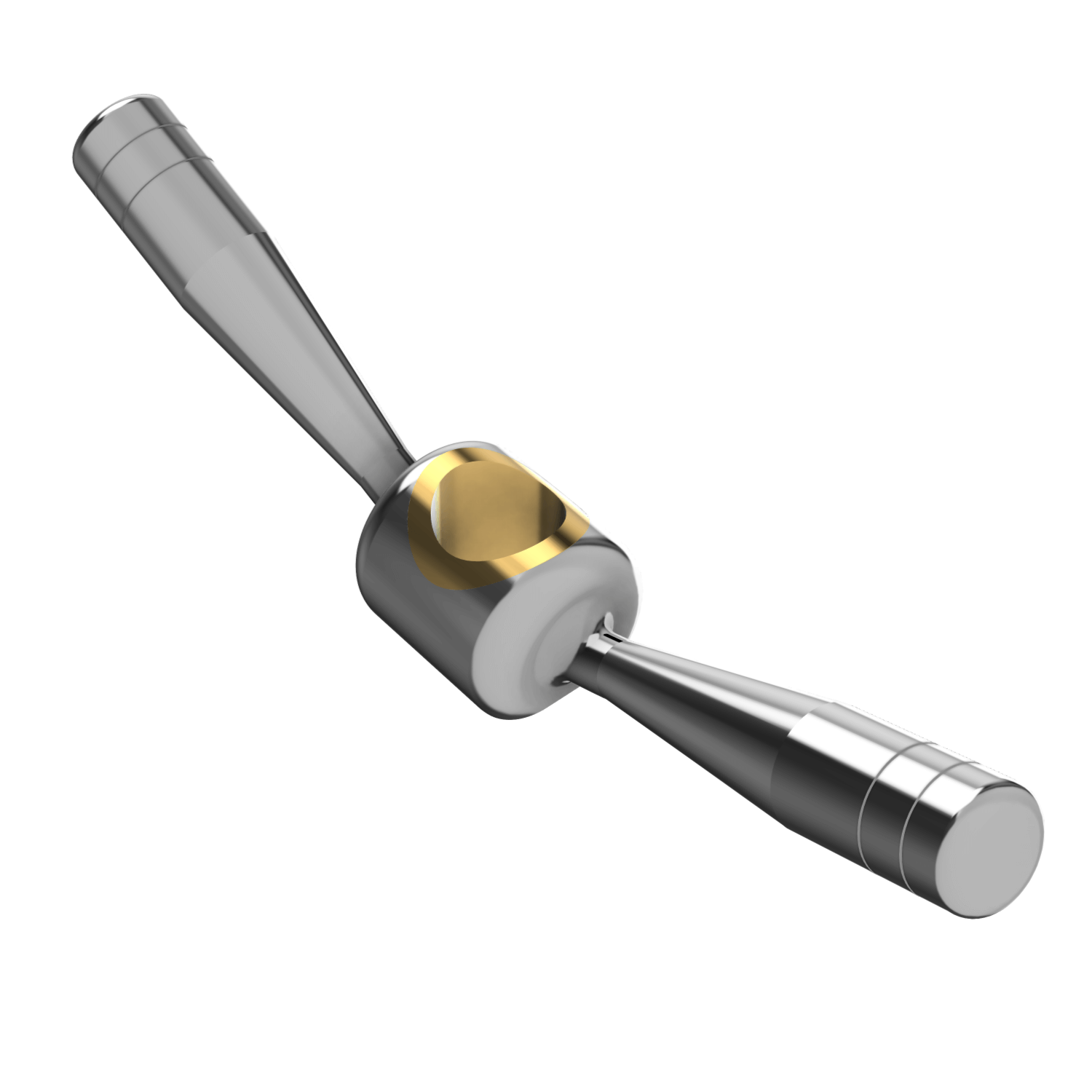
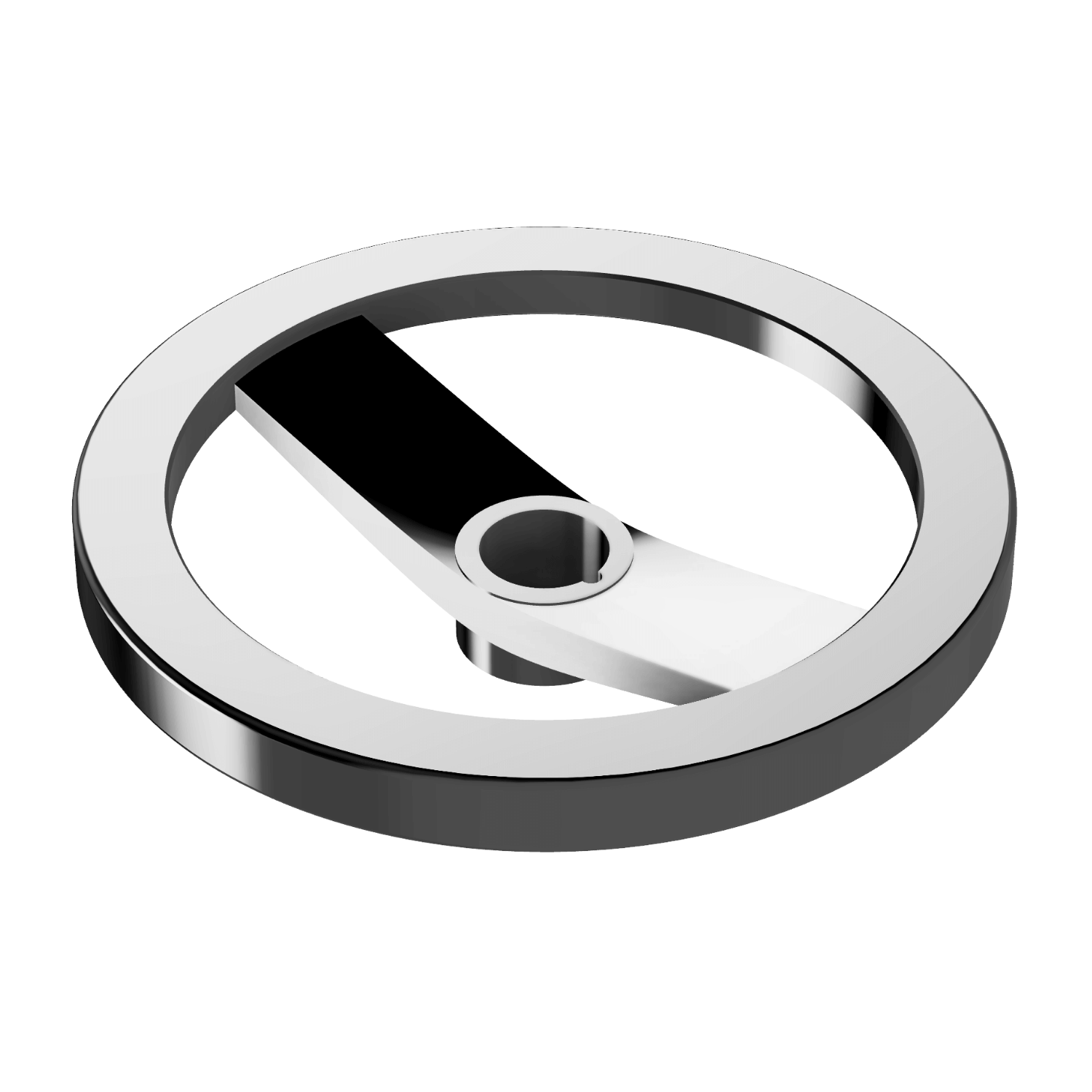
Several factors affect the pressure resistance of a manway – including the thickness of the frame wall or the design of the cover. However, an important element determining the pressure resistance of round manways is also the number of handwheels installed.
For many models, the overall pressure resistance of the manway increases with the number of holding points (handwheels) that affect the tightness of the entire structure. So, for example, the same model and dimension of the round manway equipped:
Important: the above data are intended only to illustrate the relationship – the exact pressure specification is presented in each model configuration.
|
Advantages |
Disadvantages |
|
+ a popular type of closing, used in multiple manways |
- with more handwheels, opening and closing the manway is time-consuming |
|
+ possibility to choose the right handwheel material for the application (for example: plastic or INOX) |
- it is necessary to ensure that all handwheels are tightened to maintain sufficient sealing of the manway |
|
+ different shapes and sizes of handwheels available |
|
The second, also popular, type of inspection manway closing is using a clamp. The solution is to connect the manway cover, the frame and the cover in between with a dedicated steel band that is clamped around the perimeter of the manway.
Unlike the handwheel closing (where the number of pressure points can vary significantly depending on the manway model), with the clamp closing there is only one clamp , which is responsible for the tightness of the entire structure. Importantly – the clamp closing is only present in the case of round manways for top mounting.
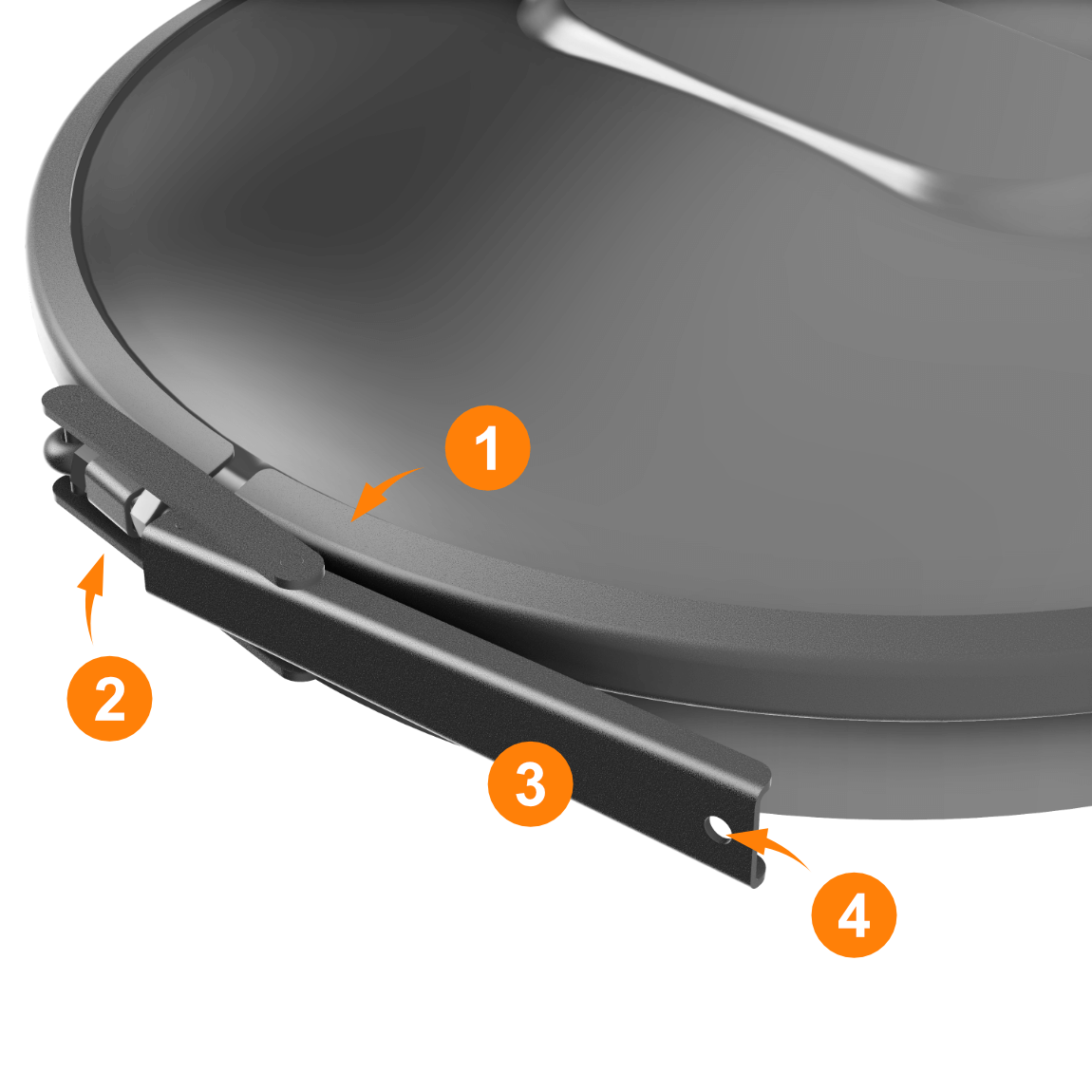
Components of the clamp closing of the tank manway:
Opening the clamp manway is done by pushing back (releasing) the clamp, thereby loosening the clamp around the perimeter of the structure. The clamp, when open, can be easily separated from the rest of the manway, allowing the cover to be pushed back freely. Closing the opening, on the other hand, is done by:
Very often the levers of clamp manway covers are equipped with a safety pin, which prevents uncontrolled release of the clamp (which could result in ungasket of the manway).
Due to the low height of the clamping clamp, manways equipped with this type of closing are ideal for pallet containers, transport tanks and those where the lowest possible overall height of the manway is desired. In the case of these tanks, a low-frame manway is one of the key elements that allow vertical storage of the tanks (placing one tank on top of another).
Clamp closing also provides good pressure resistance. This is because most models of clamp inspection manways are characterised by resistance from 0.5 bar to as much as 2.0 bar (the exact specification depends on the manway model). This feature means that clamp manways can safely operate in installations where there is a risk of low pressure. In addition, manways with clamp closing come in a wide range of sizes (models from DN150 to DN1400 are available).
|
Advantages |
Disadvantages |
|
+ good pressure resistance of the manway |
- need to apply significant force to close the manway |
|
+ ability to quickly release the cover |
- clamp is usually dedicated to a specific model |
|
+ low-profile manway design (desirable for transport tanks) |
|
|
+ tightness of the closing around the perimeter of the manway |
|
A slightly less common type of manway closing is the sliding gate closing. This type of closing is used primarily in large rectangular manways, which are installed in the side shell of tanks and silos.
The closing of the manway in the form of a sliding gate valve rests on an additional frame that extends upward, which is the range of movement of the cover. Both lifting and lowering of the cover occurs in the vertical axis and can be carried out:
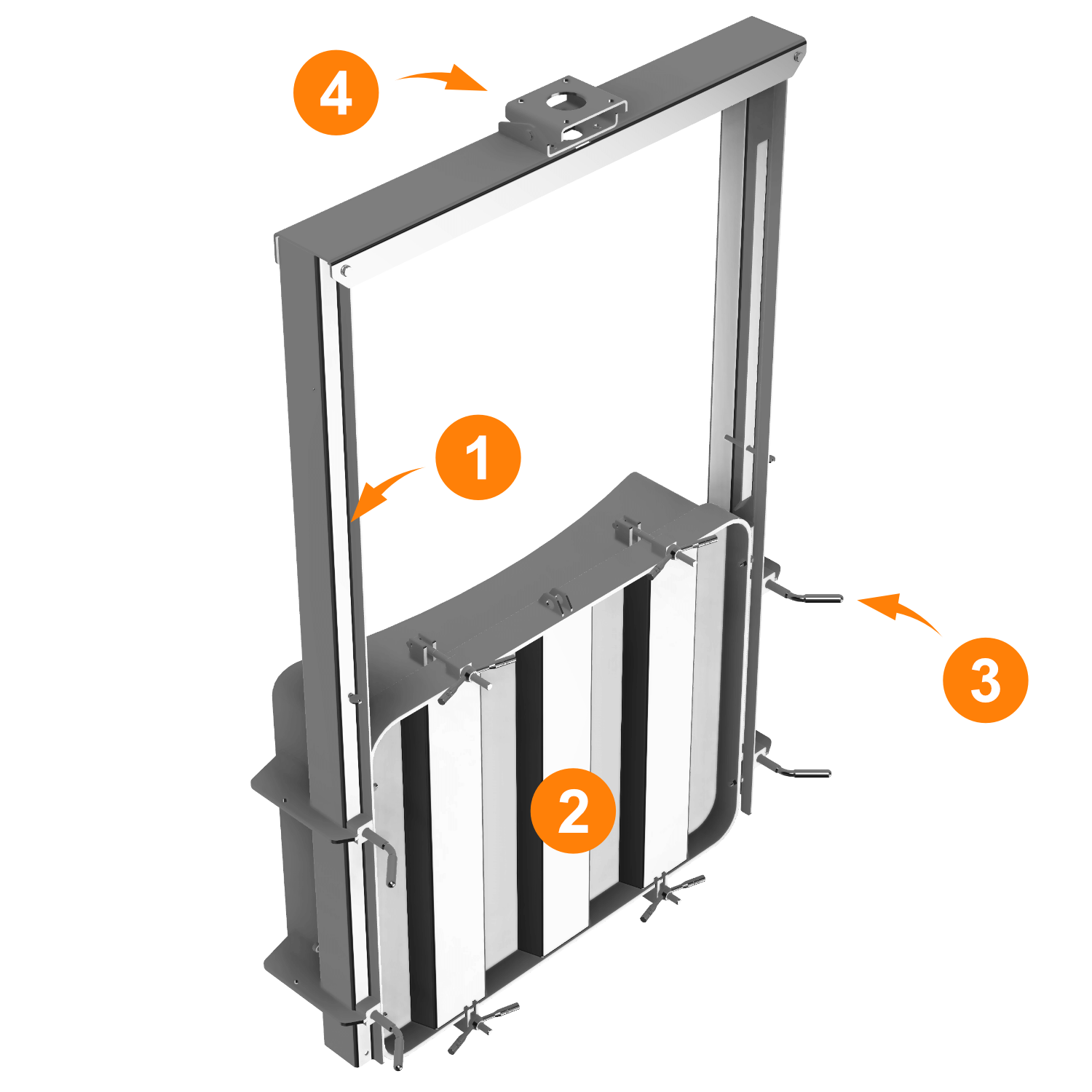
In some cases, the manway cover can also be pressed against the manway frame with the help of handwheels located around its perimeter to ensure tightness.
Components of the sliding gate closing of a tank manway:
Manway covers with sliding gate closing are used primarily in tanks and silos where the installation of a large inspection opening cover is required, while the manway door itself is often opened and closed. Therefore, they are perfect as manways mounted in the lower part of the side shell in process tanks, which must be frequently emptied manually (for example, from production residues).
|
Advantages |
Disadvantages |
|
+ ergonomic way to open the manway with a heavy cover |
- manway frame and cover require frequent monitoring for cleanliness and working condition |
|
+ possibility to install an actuator for automatic raising and lowering of the cover |
|
We use cookies